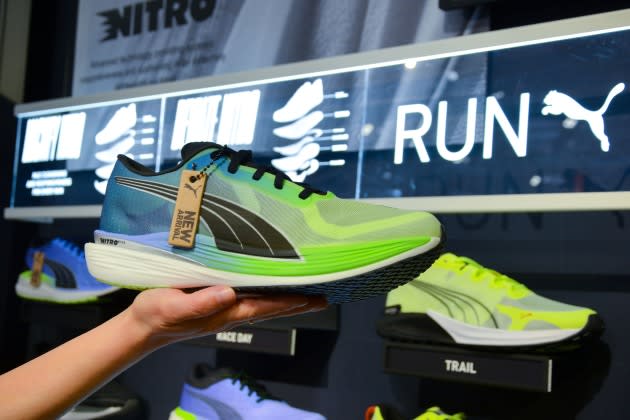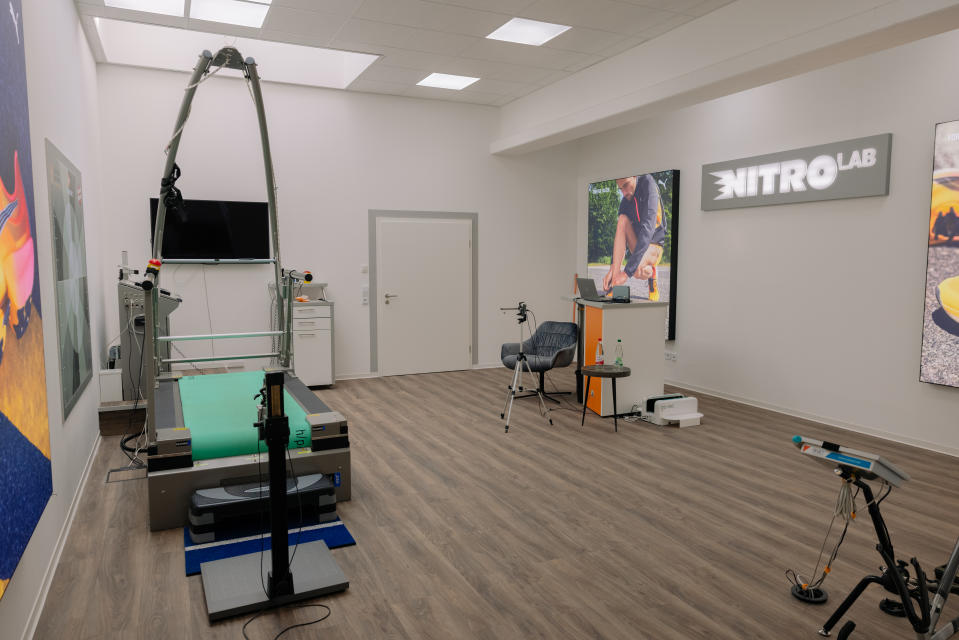China Rebounded, America Sputtered for Puma in Q1

A return to growth in Greater China helped Puma attain a 14.4 percent increase in first-quarter revenues to 2.19 billion euros, while a glut of inventory and anemic demand in North America dragged on the numbers.
Echoing some of the contrasting regional performances relayed by Europe’s luxury goods giants at the top of 2023, Puma said sales advanced 27.4 percent in Asia-Pacific in the three months ended March 31, a contrast to its declining business over the past two years because of the coronavirus pandemic.
More from WWD
“I’m confident about our long-term trajectory in China,” chief executive officer Arne Freundt told a conference call on Wednesday, attributing the rebound mostly to the end of the country’s zero-COVID policy and a continued ebbing of anti-Western sentiment.
The executive said he plans to travel to China in a few weeks to “get an overall perspective” on the vast and pivotal market, where Puma recently opened four stores with a new design concept, including a flagship in Beijing.
Gains in the EMEA region registered 25.4 percent.
By contrast, sales in the Americas declined 0.8 percent, with the German sporting goods firm blaming high inventory levels, particularly in the off-price channel. Puma aims to reduce its dependency of discounters and pursue business with “more desirable retailers” in North America, where sales in the first three months of the year fell 19 percent.
“We expect the U.S. to be a difficult market,” Freundt commented, also flagging “low consumer sentiment” due to inflation and recessionary pressures.
By contrast, Latin America continued to show strong growth, Puma noted.
Freundt, who succeeded Bjørn Gulden last November after Gulden was poached by Adidas, spent a good deal of the call highlighting product innovations and marketing thrusts for specialist performance categories, especially soccer, basketball, golf and running.
He noted that Puma now boasts 15 percent market share in soccer shoes. Underscoring how it’s ramping up its performance credentials, he talked up the recent opening of the Puma Nitro Lab in Dillenburg, Germany, where its professional athletes can come for shoe fittings, and where it can “study their body movements and body dynamics… so we can fine-tune our products further.”
Headlining product excitement on “sport style” ranges, Puma’s first drops from its new multi-year collaboration with Rihanna are scheduled for Q3 and Q4, with Freundt noting the designs would be unisex, and there would also be a range for kids.
Freundt said he had a “fantastic meeting” with the music star last week in Paris “and as you can see, she’s already starting to endorse our product.”
Footwear was the star category in Q1, with revenues up 28.8 percent. By contract, apparel sales inched up 1.5 percent, while accessories revenues slipped 1.7 percent amid anemic demand for legwear and bodywear, especially in North America.
Net income slipped 3.4 percent to 117.3 million euros and Puma’s gross profit margin declined by 70 basis points to 46.5 percent. The company blamed the “ongoing industry-wide promotional activity, higher sourcing and freight costs as well as unfavorable currency effects, which had a negative impact on the gross profit margin.”
Freundt cautioned that 2023 would be marked by “pressure on gross profit margin and profitability.”
The company is forecasting low- to mid- single-digit sales growth in the second quarter due to high inventory levels and “continued headwinds in the market.”
The numbers came in slightly ahead of consensus expectations, with RBC analysts noting that “we expect sentiment on sporting goods to improve in 2023, supported by China reopening, excess inventory liquidation and stabilization of earnings.”

Best of WWD

